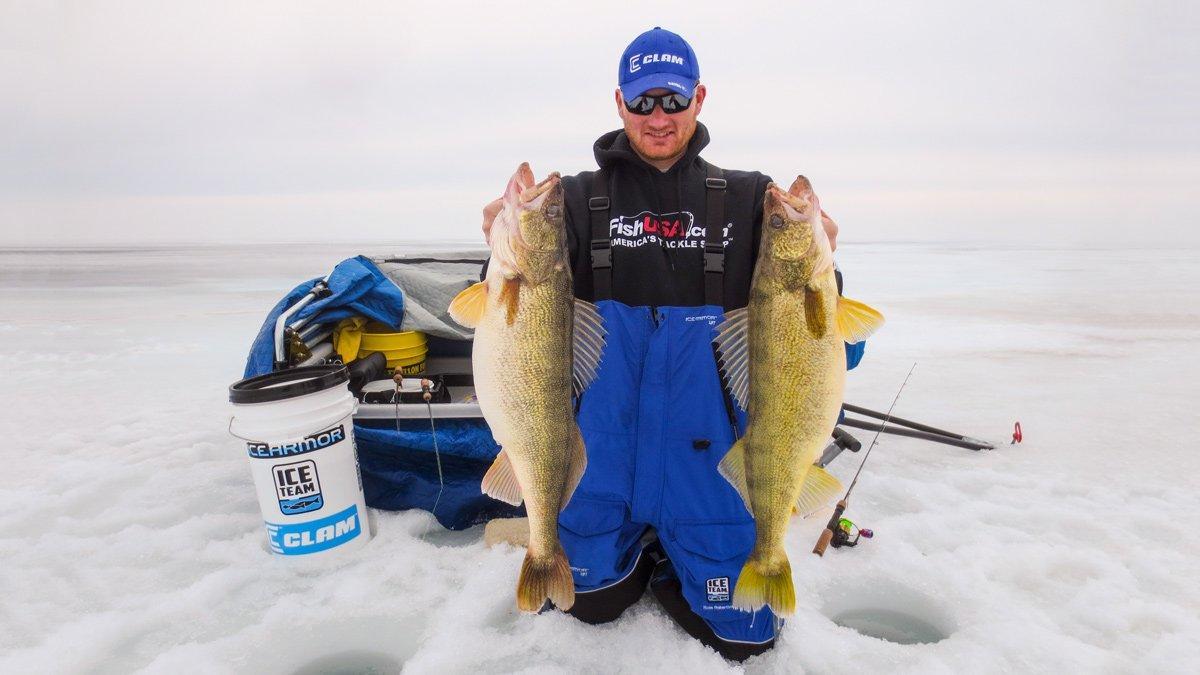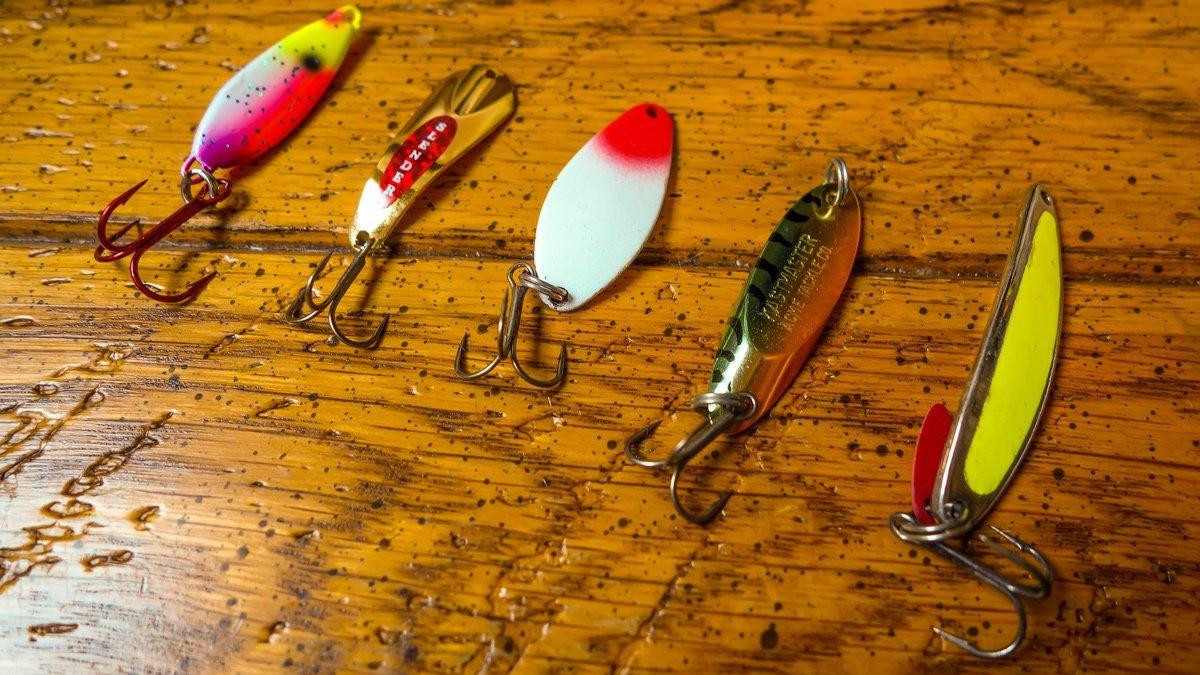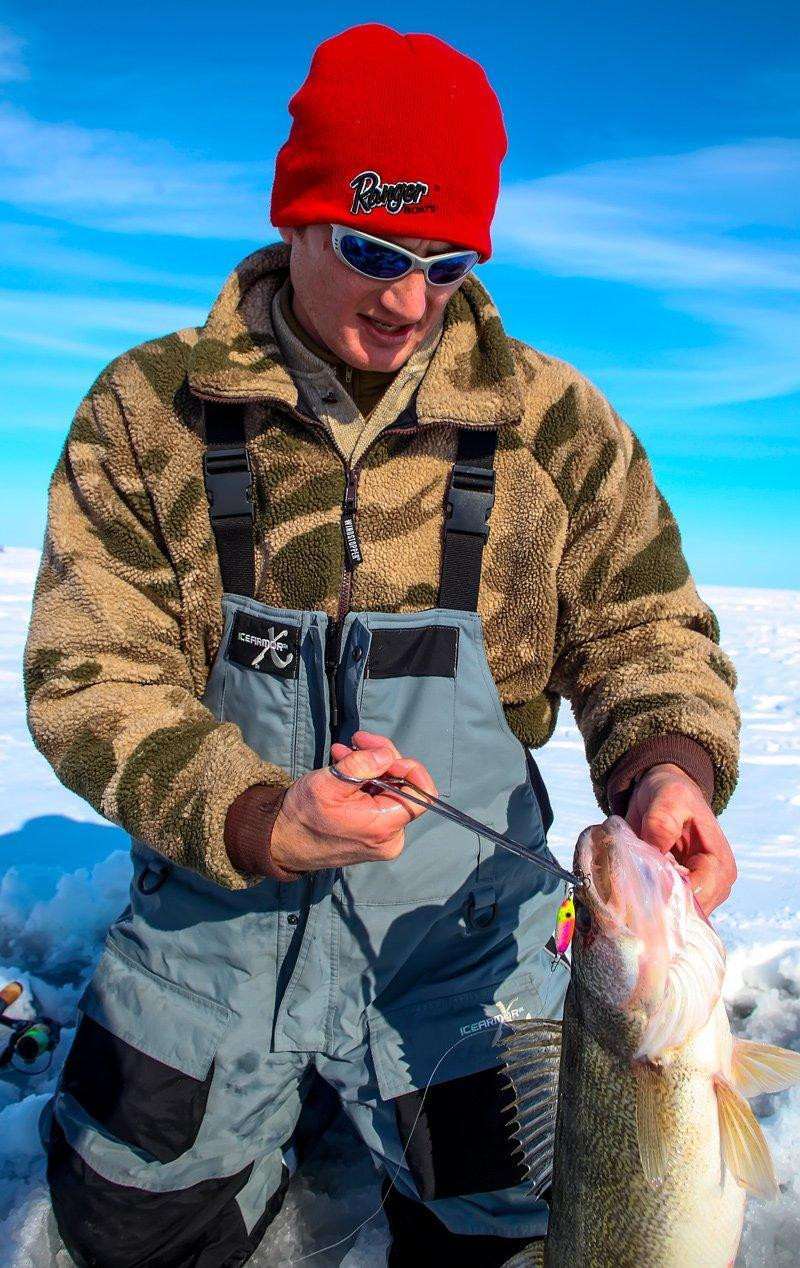We all have our preferred lures and even categories of lures. To be consistent, however, you need to be both competent and confident with a multitude of techniques. Nothing could be more true than when referring to ice fishing lures for walleyes.
Whether it be the extreme low temperatures, potentially gin clear water or the fact that most species under the ice have much longer to look over and dissect your presentation, your game needs to be on point to consistently trick hard-water walleyes. Having a variety of lures in your arsenal will help you cater towards walleyes’ preferences just like a good mechanic that has tools for all jobs.
These three lure classes will help you catch more walleyes under ice:
- Horizontal jig
- Spoons
- Ice jigs
Horizontal Jig
Many similar lures fall under this category, but the first lure to come to the mind of most anglers is the Jigging Rapala. Extremely versatile, the Jigging Rap and other balanced minnow lures like it can be fished and modified in more ways than any other presentation.
Action“”When jigged and dropped on slack line the Jigging Rap darts in a semi-circle. Perform this motion several times in a row and it will swim in a nearly perfect semi-circle. This motion can be extremely effective and different from most up and down presentations. Another added benefit is that in its circling action you cover more real estate that just directly below your hole.
Call In“”Much like the motions described above, simply jigging more aggressively and with sharper pulls the lure becomes very erratic and effectively effective draws fish closer. Moving the lure as much as 5 feet in the water column with three to five aggressive jigs and then pausing will cause the Rap to glide below the hole and remain motionless. When fish are drawn in but do not commit, a follow up rod with a different presentation can trigger a bite.
Finesse“”At times the best application is to fish a Jigging Rap like it is a jig and minnow, slight lift and drops. A slight roll of the wrist causes the Rap to twist and do a slight roll, which has been a very effective way for me to get even the most reluctant walleyes to bite. Some anglers will even put on a dropper chain to replace the center treble hook. By getting the hook farther away from the body you can get bites that just barely touch it much better as well as get additional action from a hooked minnow as you remain motionless with the lure itself.
Modifications“”Aside from the previously mentioned modifications simply replacing the stock hook for a size or two larger is a quick way to improve your hooking rate. Cutting off the single nose and tail hooks, particularly on larger sizes, is also a good way to keep them from hooking in the hole when landing a fish. Anglers that do not use bait often hook fish on the single hooks much more so than anglers who tip and rarely catch fish on anything but the treble hook.
Spoons
Perhaps the largest and most preferred presentation for ice fishing. A spoon is not just a spoon, however, and you need to have an understanding of how they are categorized and what that means for you. We’ll cover spoons in greater detail in my next article, but for now just know that most are fished with simple lift and drop techniques, and when you need to switch to a different action, you choose a different spoon.
Curved“”Spoons that literally have a curve molded or bent in them typically kick or flutter out to the side on slack line. A classic example of this is the Swedish Pimple, made from a brass blank it fishes heavy, but still has a remarkable action. They can be fished deep or in current yet still have a triggering quality in their action.
Flutter“”Growing leaps and bounds in popularity, so are the available models on the market. In shallow water, using a spoon that is intended for open water trolling such as the Silver Streak Jr. can be a day changer when walleyes want a slower falling presentation. Experience has taught most that a compact spoon is generally better when using flutter spoons and this can be seen with arguably the hottest ice spoon last winter, the Slender Spoon. With all flutter spoons, be careful to not “over tip” them with too much bait, which will kill their delicate action.
Crossover“”Extremely popular are spoons that fish heavy, but not too heavy, erratic action, but not too erratic. Popular spoon that fit this category are the Little Cleo and Kastmaster. When fish become finicky using the lightest size you can get away with will help slow the fall rate and have more of a unique action.
Rattle“”Rattle spoons can be hit and miss lures. They seem to have days where you better have one on if you want to get bit and then days when you can’t buy a bite. Rattle spoons are particularly effective in dingy water or when drawing fish in from a distance. Most in this category are made from lead and have little action. The Rattle Streak from Silver Streak is a more slender lead spoon that has a little more kick out action compared to other spoons in this category. Different brands have different rattles, fish seem to prefer different pitches and it something that needs to be considered.
Plain Jig
With all of the fancy spoons and ice presentations available, we sometimes forget to go back to the basics. The amount of fish that get iced with a plain jig by anglers in the know would surprise you. In most cases, they perform best in situations where fish are below you and in a neutral to negative mood or as a follow up for to the more aggressive presentations mentioned above. Think of it as a one-two punch.
Helping in this category are advancements in materials and companies realizing a potential new application. Tungsten jigs have dominated the market the last few years for panfish due to their ability to quickly get to depth. Much more dense than lead, you also have a more compact presentation.
Clam Pro Tackle released several of their most popular lures in an “XL” series which means they are equipped with hooks several sizes larger than most common jigs. Aside from not bending on larger fish like walleyes, they also allow you to tip then with a minnow and still have enough gap left to get a solid hookup. The last few years these have been extremely effective when all other lures seem to come up short.
Having a bigger toolbox coupled with confidence and experience to know when and how to use each of them will improve your ice fishing this season.
















